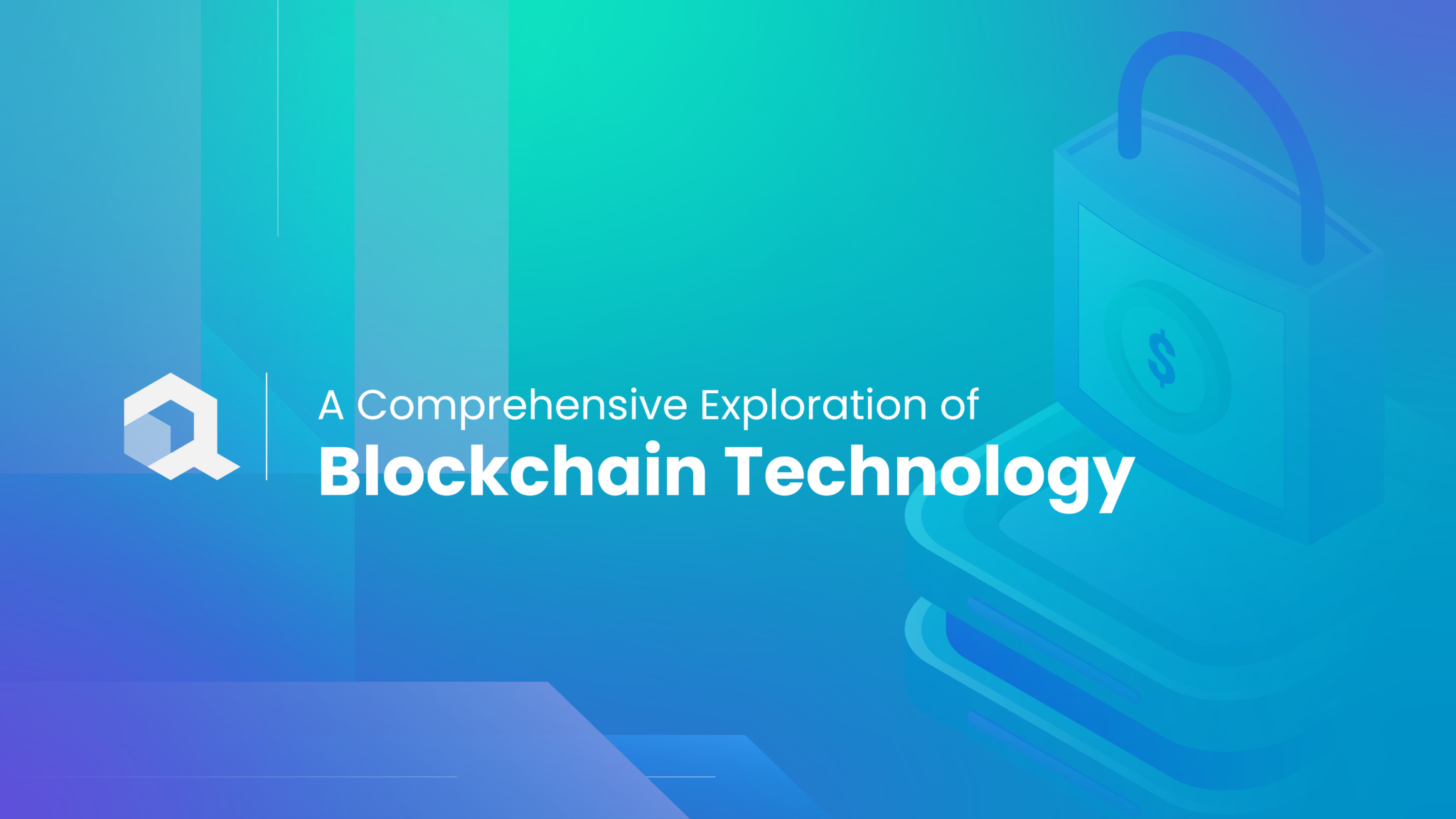
Blockchain has brought change to many industries by ensuring a system that is free of any human intervention and also providing transparency. The security environment of blockchain technology is very varied and extensive, encompassing not only cryptographic but also network and application-level concerns.
In essence, the decentralized structure of the blockchain, aimed at eliminating single points of failure, provides a security foundation. Nevertheless, the actualization of this revolutionary technology is achievable only through a conscious and dynamic process that incorporates strong security measures at all phases, from development to maintenance. Nevertheless, as with any new technology, it depends on ensuring strong security measures. Here we will discuss some of the issues associated with blockchain security and ways in which it can be made more resilient to threats.
Understanding the Basics of Blockchain Security

Blockchain security is the keystone that supports the sustainability infrastructure while preserving integrity and trustworthiness in decentralized systems as an integral part of the block chain philosophy. The distributed foundation of the blockchain is maintained through a chain of nodes. Validation of transactions, however achieved via either energy consuming Proof-of Work or the energy efficient Proo!f of Stake confirms not only the transaction itself but also establishes a tamper resistant record that contributes considerably to system immutability.
With cryptography as a sentinel, blockchain security provides a very good design for secure identity verification transactions authenticated through digital signatures and data integrity maintained by means of hash functions. The pillars of cryptographic security—the public and private keys—allow for safe user connections within the blockchain network.
The society of blockchain is also very affected by the tension between permissioned and permissionless blockchains. Permissionless blockchains, such as the Bitcoin and Ethereum networks, promote a low-trust environments where anyone can join without any permission. However, permissioned blockchains are very prevalent in enterprise applications with limited access. The implications of these models must be deciphered in order to design security measures that fit into the blockchain architecture.
Smart contracts, which are computer protocols that facilitate the automatic execution of a contract’s provisions once certain conditions have been satisfied, make the system even more complicated, and they require high levels of security. Errors made in the smart contract coding may result in big vulnerabilities and exploits; hence, the need for auditing as well as a very rigorous code review is inevitable. Moreover, protecting private key management, where users’ keys act as the blockchain asset gatekeeper, is also very crucial. In this regard, hardware wallets and secure key storage solutions become essential elements in avoiding unauthorized access.
The part of blockchain security that is known as network security ensures the prevention of numerous threat types, including DDoS attacks and Sybil attacks. An unbroken continuum of blockchain operations depends on robust network defenses. However, regulatory considerations add another layer to the complexity. It is very vital that blockchain projects adapt to the changing legal environment. The interplay between the concepts of deconcentration and adherence to the governing norms plays a crucial role in ensuring compliance minimization and the minimization of legal risk.
In this complicated space where security is multi-faceted, these basics are not only a necessity but also a strategic need for blockchain practitioners.
Applications Beyond Blockchain security

Outside of blockchain security, other uses of the blockchain can also be seen in different industries and functions. Here are some key areas where blockchain finds application:
– Supply Chain Management
The effects of blockchain on supply chain management are very revolutionary. Such problems as fraud, delays, and transparency prevail in conventional supply chains. However, the blockchain overcomes these obstacles by creating an immutable and transparent ledger that records each transaction from the production of raw materials up to the final delivery. This transparency helps to identify inefficiencies, reduce fraud and also ensure the legitimacy of products. The blocked chain is also characterized by decentralization, thereby reducing the possibility of a single point failure and increasing supply chain resilience. Through the blockchain, the stakeholders are able to access real-time information, which enables faster decision making and also reduces coordination failures across the supply chain network.
Second, traceability is a very significant strength. In industries such as food and drugs, blockchain ensures that consumers can track the source of products by enabling them to verify quality and safety. For instance, the contamination source in a food recall can be identified quickly, reducing the impact on consumers and brands involved accordingly. In general, blockchain does more than just provide a secure supply chain; it redefines how we can manufacture, ship, and also consume goods.
Also Read: Market Maker Options: Definition and How They Make Money
– Smart Contracts
Smart contracts are a very revolutionary use of blockchain technology in contractual agreements. These self-operating contracts contain predetermined rules, conditions and penalties. The first major feature is the roboticness of contract execution, eliminating mediators such as lawyers or notaries. This not only simplifies the procedures but also eliminates most of the costs and reduces the possibility of human error. The value of smart contracts is particularly significant in cases where the conditions necessary for fulfillment are clearly known and can be pointed out in the code.
Besides efficiency, smart contracts bring a new dimension to reliability. Blockchain, with its native immutability and decentralization, makes it certain that once a smart contract is deployed, its code as well as its execution are impossible to change. This makes the parties more confident, which is especially true where trust is hard to come by. However, these benefits come at a price, as several challenges related to code vulnerabilities and uniform laws for smart contracts still persist. However, the ability to cut dependence on intermediaries and improve trust in contractual agreements makes smart contracts a point of innovation within blockchain.
– Digital Identity
Applying blockchain to digital identity management plays a really essential role in overcoming security and privacy issues in the new information age. In most cases, traditional centralized identity systems are very vulnerable to attacks and illegal penetration attempts. Through a decentralized yet very secure solution, blockchain provides people with control over their personal data. Firstly, selective access to data can be authorized by the users, and then the information becomes immutable because it gets recorded on the blockchain. This secures digital identities and minimizes identity theft.
Also, the distributed nature of the blockchain eliminates a single failure point, which increases the system’s resiliency. This has serious implications in a variety of industries, such as finance, healthcare and government services, among others, where valid identity verification is very necessary. As a fully universal, interoperable digital identity standard, it may simplify procedures and facilitate service delivery everywhere while preserving the protection of intruders.
Blockchain Security Overcoming Challenges

Blockchain security has many significant challenges to address, and this is very essential in ensuring that the blockchain networks are secure and reliable. Here are some key challenges and strategies for addressing them:
1. 51% Attacks
In decentralized networks, especially those utilizing the Proof of Work (PoW) consensus mechanism, a 51% attack is always possible. In such attacks, malicious actors or nodes that colluded together could take over most of the computational power in the network, which works against its decentralized nature. To address this, blockchain networks introduce consensus mechanisms that require high computational resources or stakes in order to validate blocks. For instance, PoW is power-intensive as the miners solve complicated math equations to get 51% of the network’s hashing power. Proof of Stake (PoS) platforms select the validators according to their holdings in cryptocurrency and also the amount they are willing to “stake” as collateral, which renders it uneconomical for an actor with ill intent to accumulate most of the network.
After consensus mechanisms, it is very important to preserve the diversity and decentralization of a network. Consistent node distribution monitoring and exercising preventative anti-centralization measures strengthen the network against any likely attacks. Besides, the vigilance of the communities and quick responses to new threats help ensure system-wide security in blockchain networks.
2. Smart Contract Vulnerabilities
While providing automated code and trustless agreement execution, smart contracts are vulnerable because of the codes. These vulnerabilities can also have very costly consequences, as exemplified by several very famous cases. The implementation of smart contracts in their development and deployment requires complete security practices. This includes deep code audits by seasoned professionals who are capable of detecting possible weaknesses, bugs or any other unintended consequences. Therefore, the use of formal verification tools and practices ensures that smart contracts comply with their specifications, thereby decreasing the chances of any unwanted behavior or exploitation.
Smart contracts must also be carefully monitored and updated continuously. Blockchain ecosystems are highly dynamic, and the cybersecurity landscape continues to change rapidly, which requires a lot of constant work on identifying vulnerabilities as quickly as possible. Moreover, the community’s initiatives that promote best practices as well as knowledge about vulnerabilities and establish guidelines for secure smart contract development make up a more robust blockchain space.
3. Privacy Concerns
Blockchain’s transparency is a big strength that presents many challenges for user anonymity. Transaction details, in particular the data on public blockchains, are open to all participants and may reveal information that should be kept secret. In order to solve this, privacy-preserving elements are being embedded, for instance, zero knowledge proofs and ring signatures. Through the use of zero-knowledge proofs, participants can prove that a statement is true without revealing its specific details, thereby maintaining transaction privacy. Ring signatures allow the mixing of transaction inputs, which makes it impossible to track individual transfers back to their original source.
To achieve this, there must be a compromise between transparency and confidentiality. This striking balance has to do with the development of protocols that ensure the preservation of blockchain integrity and privacy at the same time. Initiatives such as privacy transactions and many other privacy coins are designed to offer users the right to confidentiality in terms of transactionality, eliminating fears regarding any surveillance or unauthorized accessibility.
4. Interoperability
Blockchain interoperability is a very key problem since most of the blockchains work in isolation. This communication gap prevents the full realization of what can be achieved through a much more interconnected and efficient blockchain ecosystem. Solutions such as sharding and layer 2 scaling seek to enhance scalability by ensuring high transaction throughput without sacrificing decentralization. Sharding means to divide the blockchain into smaller pieces that can independently process transactions. Layer 2 scaling solutions, such as state channels and sidechains, relieve the main blockchain of certain transactions.
Standardization efforts are very central to promoting interoperability. Common protocols and interfaces also develop between the different blockchains, facilitating communication. Some of these initiatives include the ILP and Blockchain Interoperability Alliance, aimed at developing standards enabling interoperability. Furthermore, such cross-chain platforms as Polkadot and Cosmos both offer frameworks for connecting various blockchains, allowing them to exchange information or assets safely.
Blockchain Security Future Perspectives
The potential future of blockchain security is full of many bright prospects but also presents some peculiar difficulties as the technology continues to get better. Here are key aspects to consider:
1. Quantum Computing Threats
As a result, quantum computing has prompted continuous research into the quantum-resistant solutions among the blockchain audience. With the development of quantum computers, it is very possible that they could pose a threat to the encryption algorithms commonly used in blockchains today.
Efforts to create post-quantum cryptographic algorithms that are resistant to quantum attacks continue promptly. It is very vital to start implementing quantum-safe cryptographic methods in order to insure the future safety of blockchain networks. The quantum-resistant algorithms’ transition could be a collective effort of the blockchain community and should not lead to any disruption or compromise on the decentralization principles.
Also Read: Market Making: Strategies and Techniques
2. Interoperability and Standardization
The interoperability and standardization of heterogeneous blockchain solutions will determine the direction in which future security can be perfected. With the increasing number of different blockchains, interoperability is crucial to ensuring smooth communication and transferring data between various networks.
Securing a blockchain environment requires homogenizing the standard security protocols on multiple platforms. Asset and data transfer between various blockchains is done through interoperability solutions, which involve cross-chain communication protocols for security purposes. Widespread interoperability and standardization will not only strengthen the overall security of the blockchain platforms but also further help in mainstream adoption of this new technology across various industries.
3. Privacy Enhancements
During the adoption of blockchain, privacy concerns remained one of the most enduring challenges. In the future, advancements in privacy-enhancing technologies are to be made, and more focus will be placed on the integration of complex cryptographic methods such as zero knowledge proofs. These options aim at achieving confidential transactions while also preserving the transparency and integrity of a blockchain.
Privacy-oriented blockchain systems may become even more popular. Finding the right middle ground between privacy and transparency will be really vital in dealing with regulatory demands as well as the user’s needs. The development of privacy-enhancing technologies is anticipated to also significantly contribute to making blockchain technology a more general purpose and widely accepted tool in many different industries.
4. Decentralized Identity and Authentication
One cornerstone in the future consideration of security is based upon blockchain’s potential to change digital identity and authentication. Allows individuals to assume ownership of their digital identities and manage them appropriately.
This transition may greatly decrease the threats attached to the centralized identity repositories, thus minimizing the immediate data breaches’ consequences. As such, decentralized identity and authentication systems may utilize the blockchain’s immutability as well as its cryptographic aspects to bolster trustworthiness in online interactions. The issues that may come against these solutions as they develop might be associated with the adoption of the users, compliance with regulation and smooth integration by identity infrastructure.
Conclusion
Blockchain technology is built on top of cryptographic security. Identity verification, transaction authentication and the integrity of data on the blockchain are all supported by a public-private key cryptography. Information encryption in the blocks is provided with cryptographic hash functions, which results in a ledger that cannot be altered. With the dynamic developments in cryptography, it is crucial to stay ahead of the possible threats that could be posed by quantum computing. As a result, blockchain practitioners are working on incorporating the quantum-resistant cryptographic algorithms into prospective systems to protect against emerging threats in the future.
Another major feature of protecting blockchain systems is network security. DDoS attacks and Sybil attacks, among others, can easily disrupt the consensus and undermine its actual integrity. Proactive network security by firewalls, intrusion detection systems and peer authentication protocols is necessary for uninterrupted, secure blockchain networks to run. In addition, shared blockchain networks require an ongoing evaluation to respond quickly when faced with vulnerabilities and threats as they emerge in real-time.
Disclaimer: The information provided by Quant Matter in this article is intended for general informational purposes and does not reflect the company’s opinion. It is not intended as investment advice or a recommendation. Readers are strongly advised to conduct their own thorough research and consult with a qualified financial advisor before making any financial decisions.
I craft stories that make complex ideas clear. I simplify the blend of data science, machine learning, and crypto trading, showcasing how advanced tech and quantitative models analyze data for informed trading choices. Join me in exploring the realm of quantitative trading, where my narratives make intricate concepts easy to grasp.
-
Alifia Berizkyhttps://quantmatter.com/author/alifia-berizky/
-
Alifia Berizkyhttps://quantmatter.com/author/alifia-berizky/
-
Alifia Berizkyhttps://quantmatter.com/author/alifia-berizky/
-
Alifia Berizkyhttps://quantmatter.com/author/alifia-berizky/

